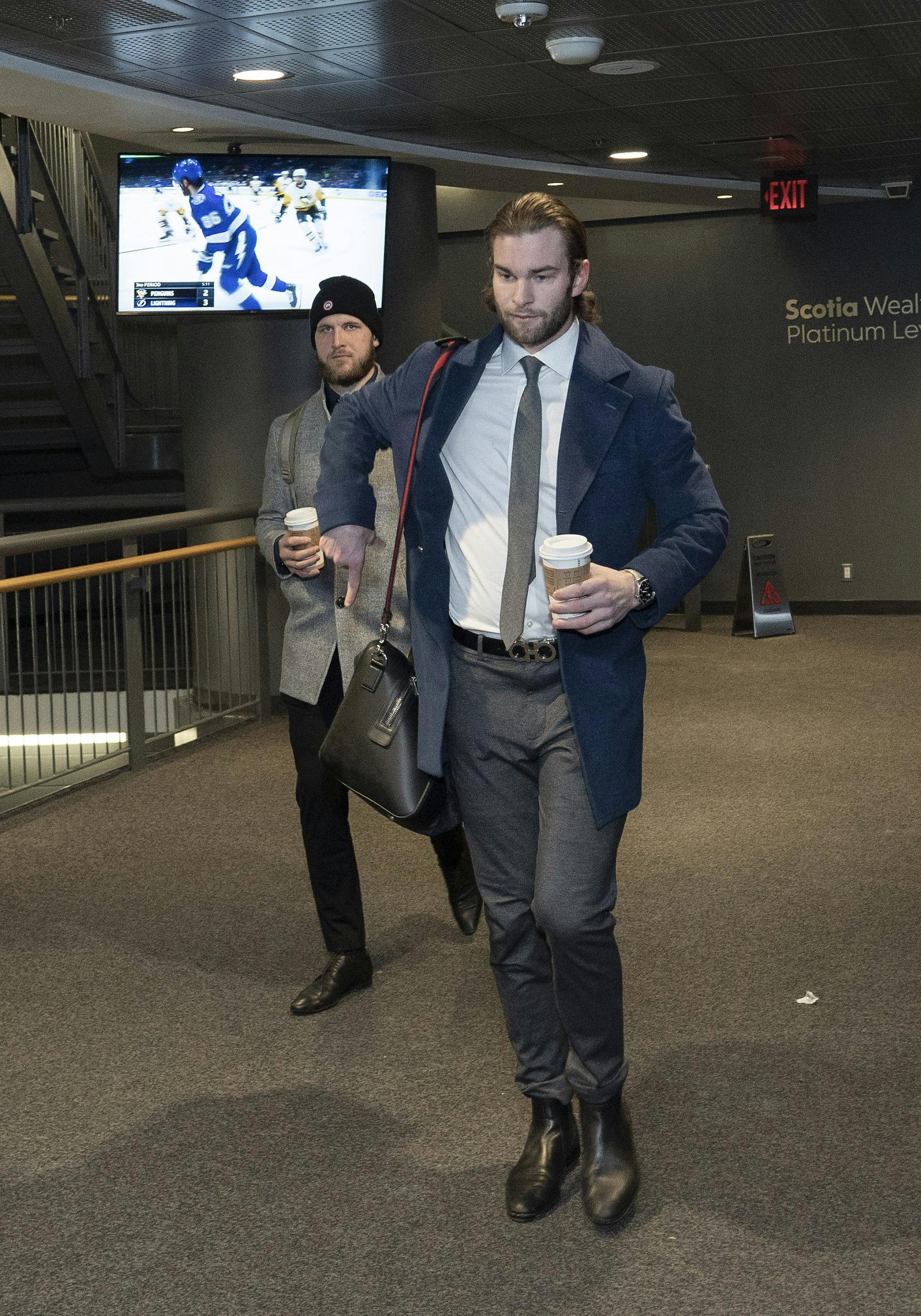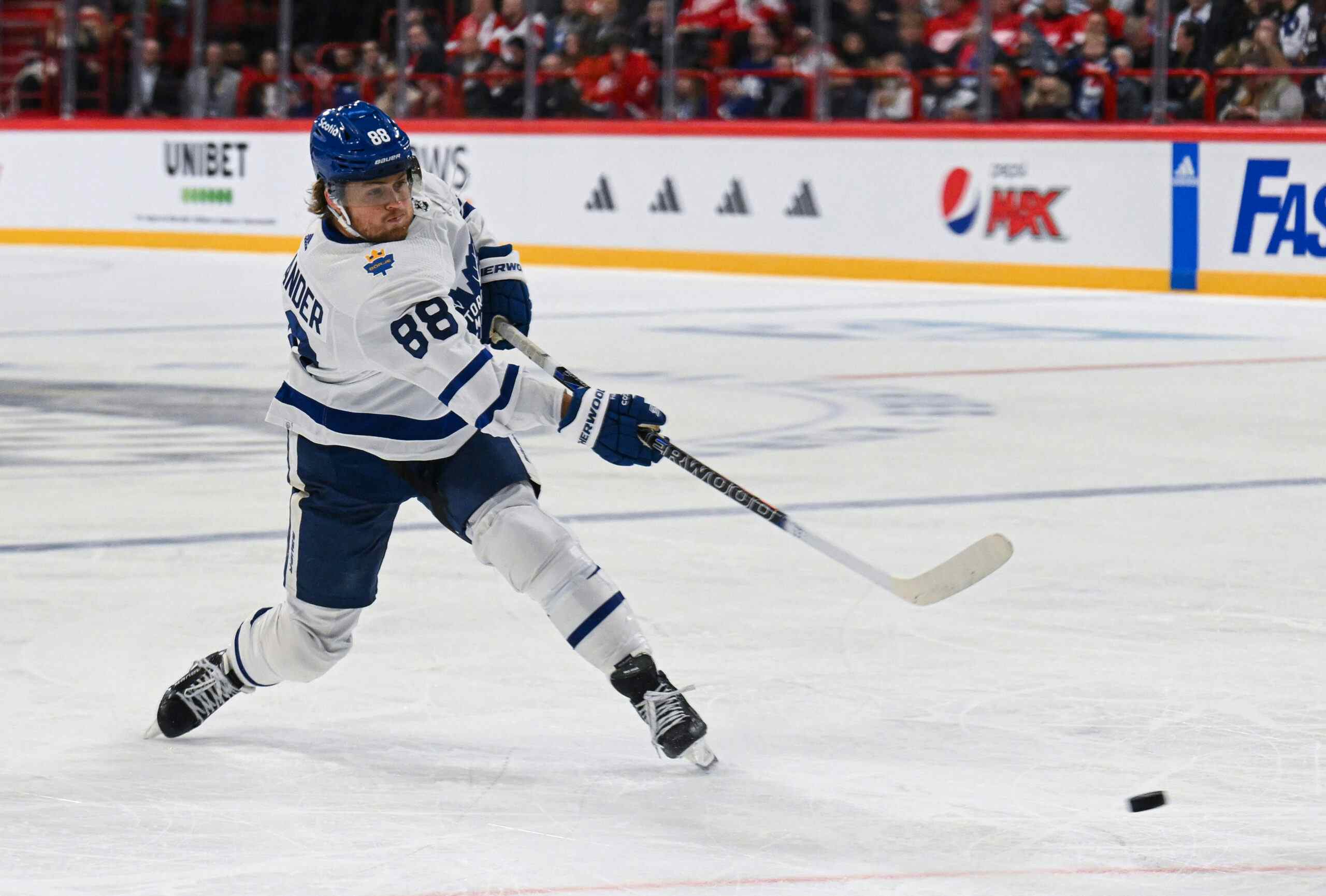What Not To Wear: Hockey Edition

By Mer
3 years agoWith the NHL moving soon to their Bubbles, there is lots of conversation in the hockey sphere around the relaxation of the Suits on Game Days mandate. From players, to reporters, to fans on Twitter, everyone seems to have an opinion on whether or not suits should be a requirement. For context, since 2005, the CBA has outlined that “Players are required to wear jackets, ties and dress pants to all Club games and while travelling to and from such games unless otherwise specified by the Head Coach or General Manager.” Players wearing suits on game day is a time honoured tradition that the team social media accounts often highlight to hype up fans for the game.
However, the rules will be different inside the Hockey Hunger Game Bubbles, where suits will no longer be required. Players seem excited by this change:
But some fans disagree:
The use of clothing to foster cohesion and a sense of team is not new, and controversy around dress codes is not limited to sports. In schools, dress codes are often viewed as a means of reducing competition and even bullying around style differences and socioeconomic status, and as a way of ensuring that students don’t wear clothing with inappropriate images or words on them.
Those arguments don’t really explain why wearing suits on game days is a longtime rule in the hockey world. An interesting discussion has grown from this, where many reporters and fans alike are looking at why suits have historically been encouraged, and why changing the requirement might make sense in the current climate. Some have taken to Twitter to deconstruct the rule and examine why it might have been implemented and adhered to for so long:
Some will tell you it’s about respect and professionalism, as seen earlier in a response to Auston Matthews’ enthusiasm over a relaxed dress code. That argument seems to fall back on the old adage that the “clothes make the man”, and suits are somehow synonymous with things like “professionalism” “class”, and “respect”.
How much of this argument is fueled by notions of what a “real” man is? That in order to fit some outdated idea of masculinity, hockey players need to be able to brawl on the ice but pull off an expensive suit off of it?
There are other layers to this argument, as well. One particularly thoughtful analysis comes from TLN’s own Brian, who noted that many seem to oppose the NHL becoming more like the NBA:
As Brian is suggesting, the racial undertones to this argument for wearing suits are hard to ignore. Aside from the sport being played, what is the main difference between NHL and NBA players? You tell me.


There are examples of this within hockey as well. PK Subban has been the subject of much scrutiny, with him being dubbed as having an “over the top” personality, often related to his suits and other fashion choices. He’s been called a distraction for not fitting into the standard cut and dry, white upper middle class hockey player mold.
There is little room to suggest that anything other than his race is playing into this sense of controversy, and is also influencing the arguments to maintain the suit status quo. Whether consciously or not, The Old Boys’ culture of hockey that favours homogeneity and has allowed toxic masculinity and racism to thrive is at play here.
There are many, though, who are loudly endorsing the dress code shift. Fans and members of the media both seem to agree that strict dress codes limit individuality, creativity, and the opportunity to showcase one’s unique personality, and that allowing these things can only be good for fan engagement and player morale. It is 2020, and we’re in the middle of a life-changing global pandemic. Is enforcing an old and tired rule on grown men really that important?
There is another question to consider as well. Does the relaxation of the suit requirement actually mean that we will get to see players choosing their own game day outfits? It appears that may not be the case. On Wednesday, Michael Russo, the Athletic’s Minnesota Wild reporter, tweeted that the team would be mandating their own version of a dress code:
One look at the replies or retweets with comments show that many people realize how ridiculous it is to dictate to grown men what they have to wear inside a pandemic hockey bubble. However, will other teams follow suit and fall back on culture, mandating specific rules of dress for their players?
From a purely logistics standpoint, this seems ill-advised, both within the Hockey Bubbles as well as during regular season play. Why is the league forcing players to wear an (likely) expensive and uncomfortable suit for what ends up being a couple hours each game day – including, many times, when boarding and deboarding an airplane to travel between games. NHL players’ bodies are not proportionate to what the average man can fit into off the rack, and so many of their suits need to be custom made. So many hoops to jump through to fit into someone’s idea of what professional looks like.
Moreso, within the Return to Play format, it makes sense that the suit mandate was relaxed – why is the Wild taking this step to dictate what their players should add to a probably already pretty chaotic packing list?
For me, the bottom line is that athletes are people, with their own style choices and personalities. We no longer exist in an environment where “business professional” is the norm – many formerly formal workplaces have relaxed their dress codes to even less than “business casual.” Hockey players play a game for a living. They aren’t, as one tweet above suggested, lawyers or bankers. As a fan, I’m far more concerned with who they are as people than I am with what they wear off the ice. And I can guarantee that suit or no suit, the vast majority of NHL players are bringing their all every time they’re on the ice – that’s how professionalism should be measured.
Recent articles from Mer





